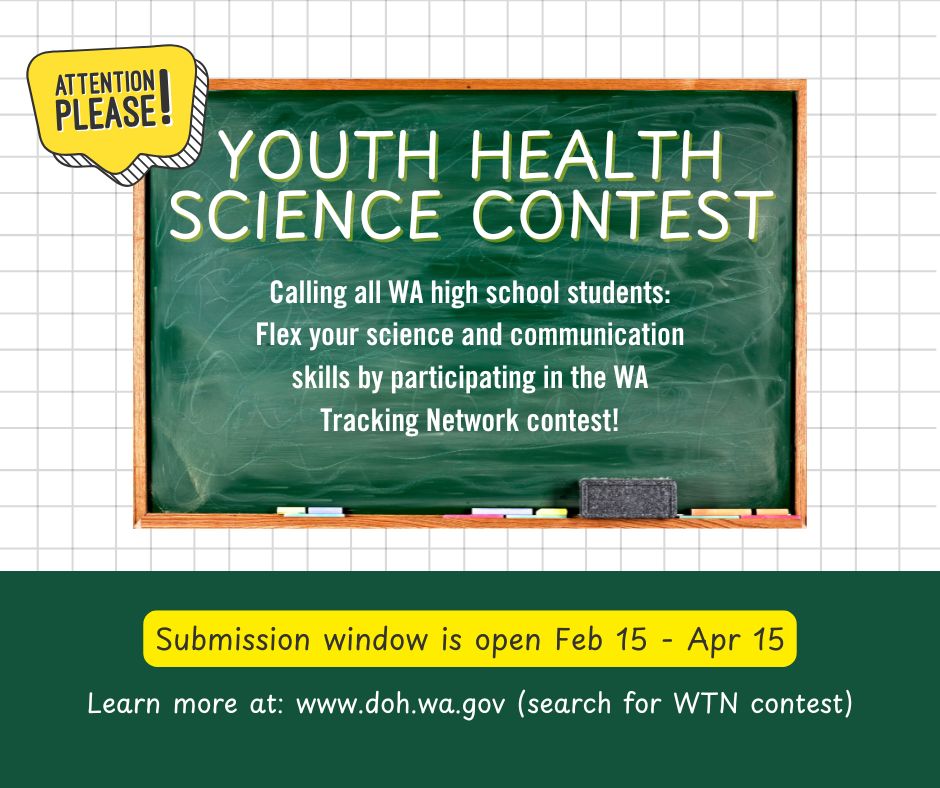Friends and neighbors,
Thank you to everyone who participated in my last survey on various budget cuts and proposals being considered before the legislature this year. The state is facing a $12-$15 billion budget deficit, with various proposals to reduce or delay funding for programs and services. Governor Ferguson has identified $4 billion in cuts, building on the $2 billion in reductions proposed by former Governor Inslee in December. This still leaves a $6-10 billion gap that must be addressed through additional reductions, spending delays, or new revenue sources.
Out of the seven potential areas for cuts highlighted, you shared that you’d be most willing to consider cuts to higher education, collective bargaining, and healthcare services for a combined cost savings of $8.5 billion over four years. Areas you said you’d like to preserve funding for included long-term care, key corrections programs, and healthcare.
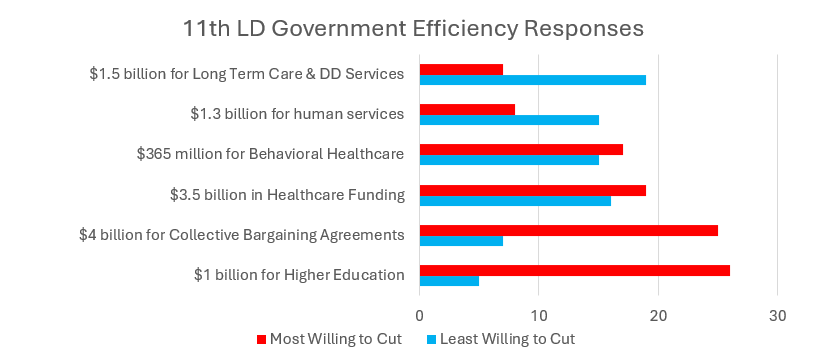
When it came to potential revenue proposals, the three with the most support included suspending bonuses for nationally certificated instructional staff (HB 1485), merging multiple public employee retirement systems into a legacy retirement system (SB 5085), and defining rental storage spaces as retail transactions (HB 1907). The combined revenue and savings from these three proposals would be between $1.5-3.5 billion. The three proposals with the least support were linking the property-tax cap to population growth and raising the limit on annual increases (HB 1334), enacting a wealth tax (HB 1319), and modifying B&O tax rates (HB 1320). These three proposals would have generated $13.7 billion in revenue.
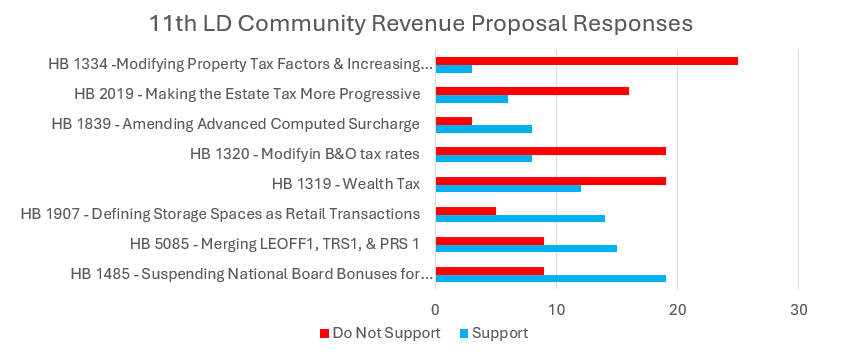
As we move forward in developing the 2025-27 biennial budgets, I will keep your feedback in mind as we seek to minimize harm to vulnerable populations and working families.
This week, I’d like to hear some feedback on workforce development and higher education. Please take a few minutes to fill out this survey.
A Secure Future for All
Workforce shortages continue to challenge vital industries across our state, from healthcare and behavioral health to trades and public service. While the Legislature has expanded financial aid, funded apprenticeships, and invested in higher education, more must be done to ensure workers can access training, secure good-paying jobs, and stay in Washington.
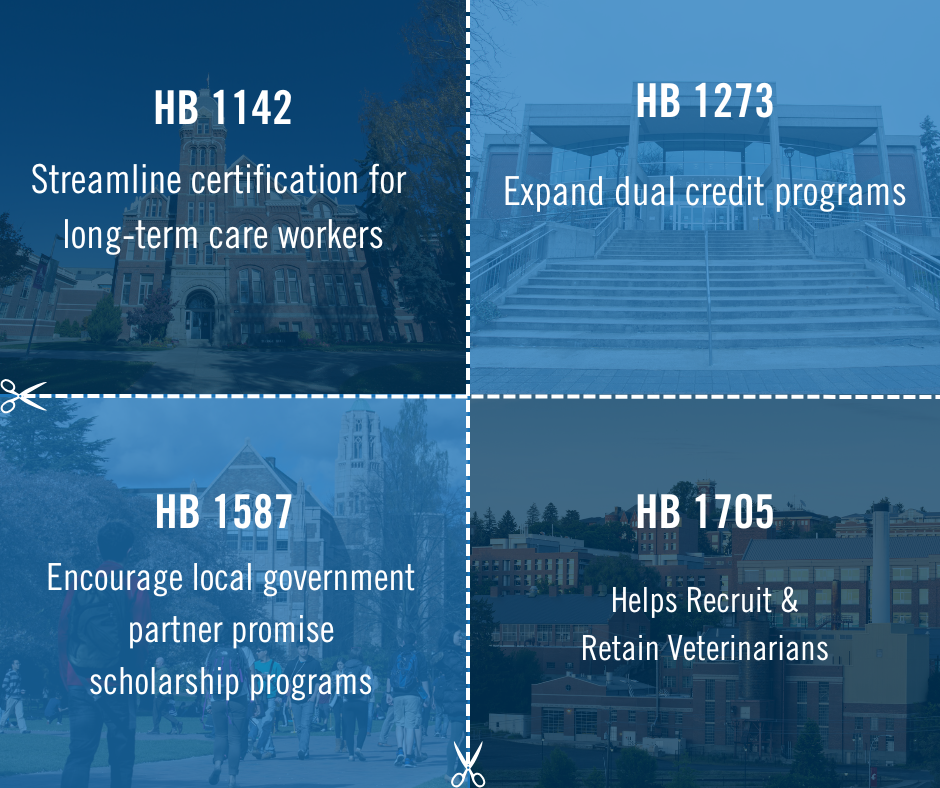
This year, we’re continuing to focus on a three-pronged approach: streamlining licensing and training to get workers into jobs faster, expanding the pipeline by increasing access to education and career pathways, and strengthening the bottom line by ensuring fair wages and job security:
- HB 1142 streamlines training and certification requirements for long-term care workers.
- HB 1273 extends a dual credit pilot program and ensures more students can successfully apply their credits toward postsecondary credentials.
- HB 1556 lowers the age for who can qualify for a fee waiver in high school and GED programs.
- HB 1587, which I introduced and passed the House on March 8th, will encourage local government partner promise scholarship programs within the Washington State Opportunity Scholarship. This is a crucial program to assist students and reduce barriers to postsecondary education.
- HB 1657, which I also sponsored, establishes the Washington 13 Free Guarantee, offering tuition-free technical college for eligible students.
- HB 1705 convenes a work group to better recruit, train, and retain veterinarians.
By reducing barriers and making strategic investments, we can build a resilient workforce that meets the needs of students, families, businesses, and our state economy.
Dept. Of Health: Youth Science Contest
Public policy, including legislation passed here in Olympia, is usually developed after careful data analysis. Big changes to a data set can be a red flag, or a sign that we need to change how we do things.
The Washington State Department of Health has an exciting opportunity for young minds to explore how data analysis leads to policy through their Youth Science Contest.
High school students can use data from the Washington Tracking Network to develop a project through one of three different tracks, including health science, science communication, and program & policy design.
The contest is open to all Washington state high school students, and the submission window runs from February 15 to midnight on April 15. Read more here.
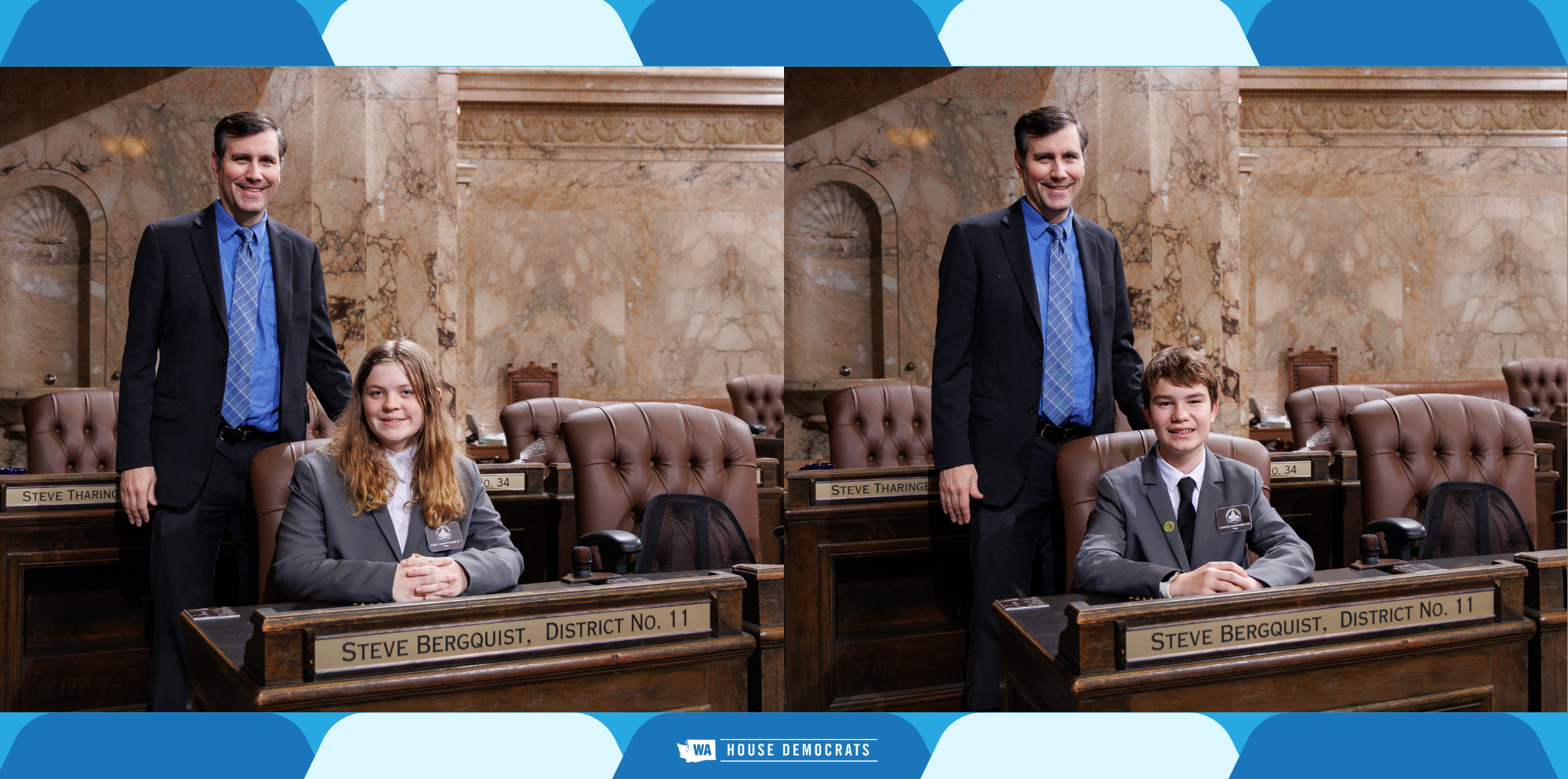
I also want to take a moment to recognize two young leaders from our community: Rose Church-Pursley, from Albert Talley High School, and Cooper Vander Meulen, from Hazen High School They recently served as House Pages in my office, learning firsthand about the legislative process while assisting with essential tasks around the Capitol.
It’s an honor to represent the 11th Legislative District. I look forward to your continued feedback and advocacy throughout the 2025 session. Thank you for reading!
Sincerely,
![]()
Rep. Steve Bergquist


